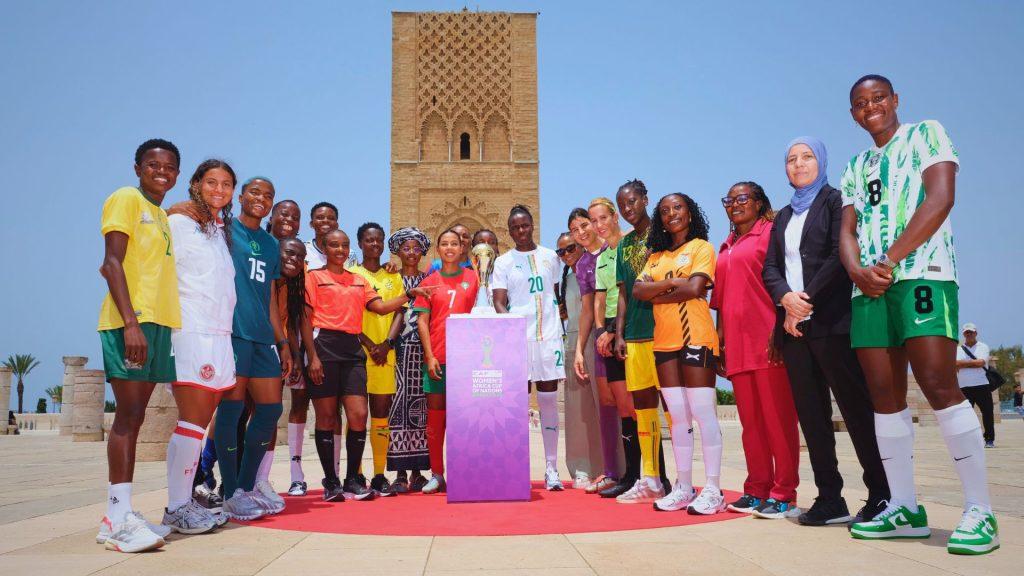African women’s football has never been more vibrant on the pitch, yet its business side continues to lag. Looking at the levek at which players of the Super Falcons of Nigeria or even Banyana Banyana of South Africa play, coupled with performances at the Women’s World Cup, it is obvious that African teams can compete on the global stage. But when it comes to sponsorship, investment, and financial sustainability, the women’s game across the continent remains underdeveloped. The paradox is stark: the sport has visibility, passion, and talent, but brands are still hesitant to commit serious funds.
The Visibility Gap
One of the most persistent challenges is the lack of sustained visibility. While men’s football enjoys live broadcasts, extensive media coverage, and well-established sponsorship deals, women’s leagues and tournaments often struggle to secure airtime. According to FIFA’s 2023 Women’s Football Benchmarking Report, only 7% of women’s leagues worldwide enjoy consistent broadcast deals. In Africa, the figure is even lower. This lack of visibility makes brands cautious; companies naturally want assurance that their logos will be seen by millions, not thousands.
What Sponsors Are Missing
Yet the market fundamentals are changing. FIFA estimates that more than 1.3 billion people watched the 2023 Women’s World Cup. In Africa alone, the Confederation of African Football (CAF) reported a 35% increase in television audiences for the 2022 Women’s Africa Cup of Nations in Morocco compared to the previous edition. These figures show a growing appetite for the women’s game. Sponsors who ignore this trend risk missing out on a young, energetic, and highly engaged demographic — a demographic that values inclusivity, diversity, and social impact in brand messaging.
The FIFA and CAF Framework
FIFA has pledged $1 billion to develop women’s football globally between 2019 and 2023, with significant allocations directed at member associations in Africa. CAF has also created its own women’s club competition — the CAF Women’s Champions League — as part of its 2020–2030 Women’s Football Strategy. These frameworks are designed to make the game more professional, structured, and attractive for investors. According to CAF, sponsorship revenues for the inaugural CAF Women’s Champions League in 2021 were modest but showed growth potential, with media rights sales expanding to over 20 African territories.
How First Movers Win
History shows that early movers in sponsorship markets reap long-term benefits. When brands aligned with European women’s football a decade ago, they secured loyalty and visibility at relatively low entry costs. Today, companies like Barclays (sponsor of the Women’s Super League in England) and Visa (global partner of FIFA Women’s Football) are viewed as pioneers in this space. In Africa, there is still room for bold brands to claim that “first mover” advantage, attaching themselves to women’s football before the competition inevitably heats up.
Social Impact and Brand Value
Beyond the hard numbers, there is a deeper value proposition. Sponsoring women’s football in Africa is not just a financial investment; it is a social statement. Research by Nielsen Sports in 2022 showed that 66% of global sports fans believe brands should support women’s sports to promote equality. For Africa — a continent with a youthful population and evolving gender norms — such sponsorships can help brands position themselves as agents of progress, empowerment, and inclusivity. The reputational returns may, in fact, outweigh the immediate financial ones.
Common Questions Asked (Answered Simply)
Q: Why don’t sponsors just copy what’s done in Europe or the U.S.?
A: Context matters. Europe and the U.S. have stronger broadcast infrastructure, established leagues, and more disposable income among fans. Africa needs bespoke solutions — building media coverage, integrating grassroots systems, and creating sustainable competition structures.
Q: Is women’s football in Africa profitable yet?
A: Not broadly. Most leagues operate at a deficit, heavily subsidized by governments or associations. But profitability is not the immediate goal — growth and audience capture are. Profit follows visibility and engagement, both of which are on the rise.
Q: How can federations attract more sponsors?
A: Professionalize league management, guarantee broadcast access, and present clear commercial packages. Sponsors want predictability — they need to know when and where their brand will be seen, and what audience numbers to expect.
—
Practical Checklist for Federations and Clubs
– Create structured sponsorship decks with clear value propositions.
– Guarantee broadcast or live-streaming arrangements for all major matches.
– Collect and present audience data (TV, digital, in-stadium) to potential sponsors.
– Highlight social impact angles — equality, empowerment, youth engagement.
– Pursue long-term partnerships, not one-off deals.
Conclusion
African women’s football is at a crossroads. On the field, the talent and passion are undeniable. Off the field, the commercial frameworks are still catching up. Sponsors who delay involvement risk being remembered as latecomers in a space that is destined to grow. For federations and clubs, the task is clear: professionalize, present data, and make the business case irresistible.
If you or your organization want to understand this space better — whether as a sponsor, a federation, or a club — feel free to reach out to me at ajojeisrael@africancoachesconnect.com for further questions, legal insight, and practical guidance.
By
Adedeji-Ajoje Israel Femisi
International Sports Lawyer|| FIFA Licensed Agent
Executive Director of Operations
African Coaches Connect

